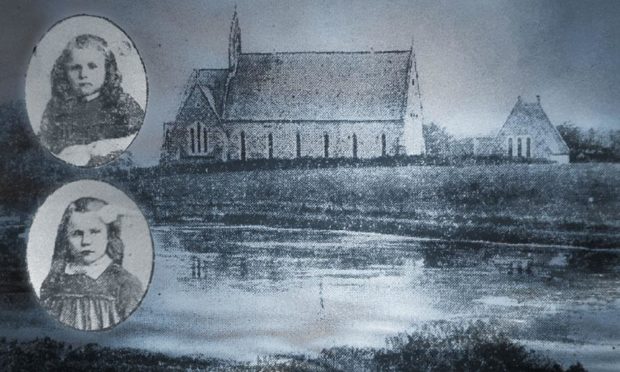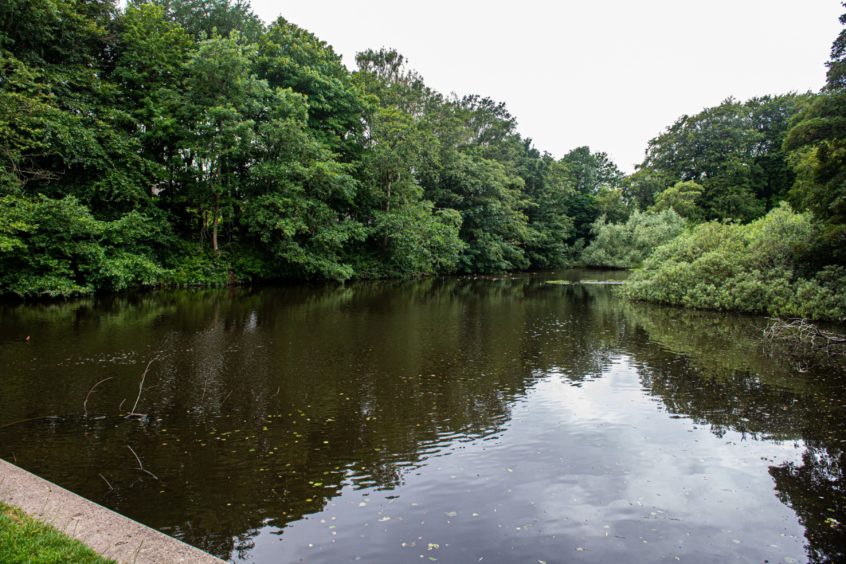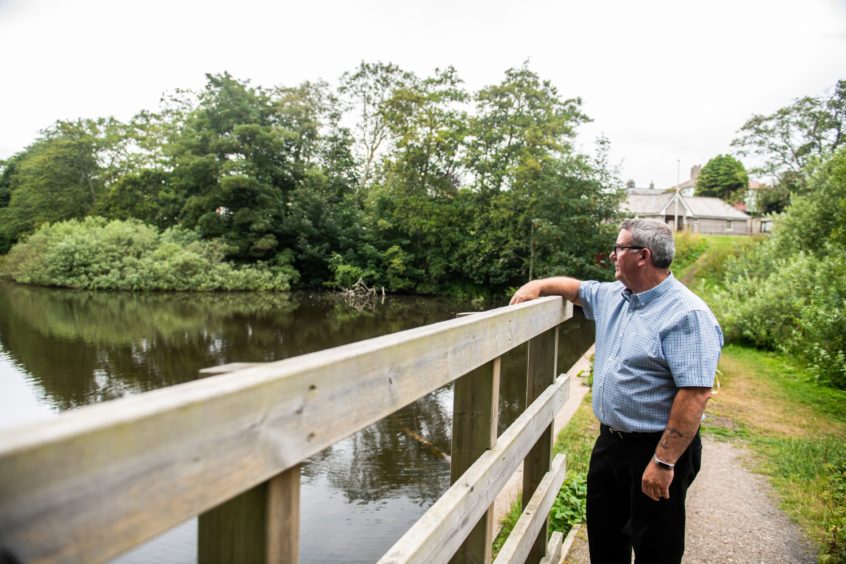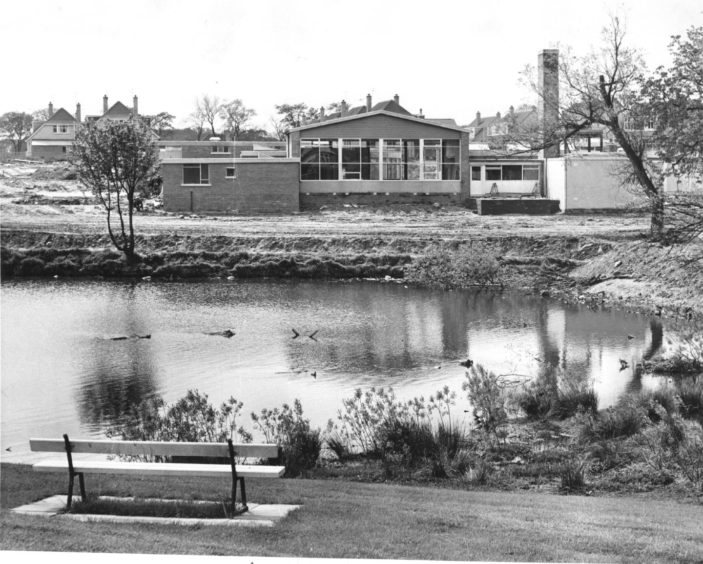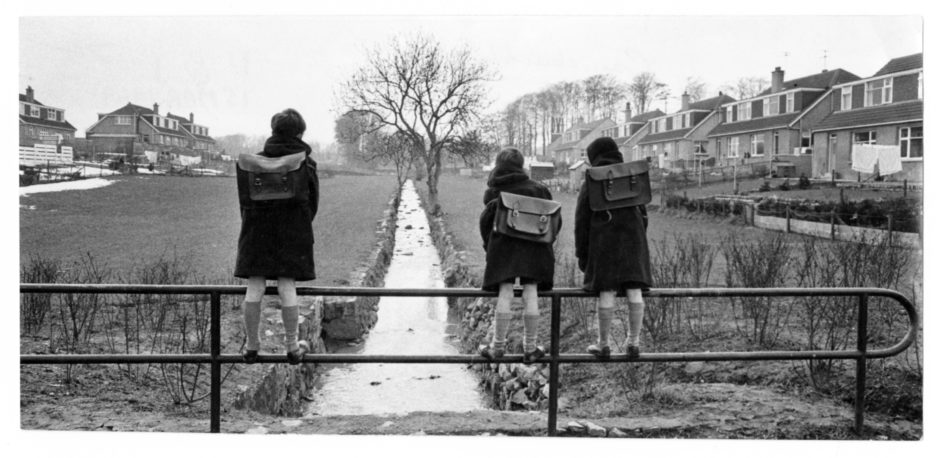It started with a pair of little girls enjoying the summer sunshine, revelling in nature, and looking for a place to cool down in Aberdeen.
Yet it ended with thousands of mourners lining Union Street in silent grief as they commemorated the short lives of Agnes and Mary Ann McKenzie.
The two children were on their school holidays in July 1911 and were known by their family and friends as being effervescent youngsters who loved exploring the countryside which surrounded them in the Granite City.
However, they suffered dreadful misfortune on a trip to Walker Dam, where an innocent afternoon spent picking flowers turned into a terrible tragedy.
And it cast a veil over the whole community when they discovered the grim details of what had happened to eight-year-old Mary Ann and Agnes, two years her junior.
The Press and Journal reported on the fashion in which they died in a story with the headline “Tragic Affair in Aberdeen” which recounted how the dam – a favourite beauty spot for nature lovers dating back to the early 19th century – had been the scene of other water-related deaths.
The paper said: “The sisters left their home at 36 Rose Street about four o’clock in the afternoon to take a walk. They had never been in the habit of going far beyond Queen’s Cross, but on this occasion, with two other girls, had travelled to Walker Dam.
“[While] there, they had been walking by the extensive sheet of water, gathering flowers and looking at the fish when the older girl [Mary Ann], who was standing on a stone at the edge of the dam, had over-balanced herself and fallen into the river.
A desperate rescue effort was launched
“The younger sister immediately tried to rescue her, but was also dragged into the water. Seeing what had occurred, a young lad who was in the vicinity, rushed to the spot and succeeded in getting hold of one of the girls.
“However, as he was not a swimmer himself, and was in danger of being dragged under the water as well, he was obliged to let go of his hold and the girl sank.
“The other girls who were in the neighbourhood screamed and the alarm was also raised by an elderly couple, who were seated on the bank of the dam further way.
“Everything that could be done was attempted to effect a rescue, but without avail, with both the sisters sinking in the deep water.”
Their father, a police constable, James McKenzie, and mother, Jane McKenzie, were both unaware of what had befallen their young ones. But they knew soon enough.
The story has had a major impact on Aberdeen bard and historian, Tony Nardi, who has investigated the circumstances surrounding the wee girls’ deaths and written poems in Doric about the incident and the boy, James Johnston, who tried to rescue them.
The site at Walker Dam now records the sad passing of Agnes and Mary Ann, but Mr Nardi, who formerly served in the Royal Navy and has worked in the offshore industry, has carried out research at the Central Library in Aberdeen and trawled through newspaper archives to unearth as many details as possible.
He has found that the McKenzies were married from 1902 until Jane’s demise at the age of 86 in 1956 and that James remained in the police and lived to the age of 79.
But, as he told the P&J, he is keen to discover what happened to them after the tragedy and what became of James Johnston, the teenager who jumped into the dam.
He said: “I revisited Walker Dam a couple of months back, so that I could complete a wee poem about my own experiences there when I was a wee boy.
“I was completely unaware at the time of the tragedy that took place there 110 years ago. But then, I read on the noticeboard that two girls had drowned in the dam by the sluice gate and I was really saddened and intrigued as to what happened that day.
“Walker Dam is an incredibly beautiful spot where wildlife continues to thrive and it has done so since the 1830s. I went to the Central Library where I carried out some research on the tragedy and gathered as much information as I could from an article in the Peoples Journal and from various other sources.
What happened to James Johnston?
“The terrible incident happened on July 23 1911, but there are so many more details to this story which I would have loved to add. The emphasis, though, should be on the brave young man Mr James Johnston. What did he do thereafter? Was he among the soldiers who headed off to the Western Front a few years later in the Great War?
“I have read a lot in recent weeks about tragedies in and around Scotland’s lochs and they are all distressing and it shows that youngsters have to be careful whenever they are near water even in these days of stricter Health and Safety regulations.
“But the loss of these two girls, Agnes and Mary Ann, was a reminder of how quickly a nice day out can turn to tragedy. And it did have a big impact on Aberdeen at the time.”
The authorities in Aberdeen were shocked by the news that the girls had perished in the water, but responded quickly to what was a salvage rather than a rescue mission.
The P&J reported: “When information of the distressing occurrence was received at the Central Police Office about half-past seven, grappling irons were despatched to the dam in order that the bodies might be recovered.
“The work was conducted by Chief Constable William Anderson, who hastened to the scene of the tragedy as soon as he had been apprised of it. In about an hour, both the bodies were recovered and conveyed to the Police Mortuary in Lodge Walk.
“During the time that grappling operations were in progress, and some time after the recovery of the bodies, an enormous crowd gathered in the vicinity of the dam, and they were much distressed at the sad affair.”
‘Oh look, here are some jellyfish’
Later accounts testified to how the victims had been excited by the thought of seeing some rare and unusual creatures when they rushed to the site.
A follow-up in the Evening Express said: “It appears that the sisters and their two girl companions had gone up by Bayview, past Rubislaw Quarries, and down the road leading past the Walker Dam, pulling flowers as they went.
“One of the girls, looking over the low dyke, remarked ‘Oh, here’s the Dee’ and then they climbed over and began to pull grasses.
“Then, going to the edge of the pond, the elder girl McKenzie exclaimed ‘Oh, here are some jellyfish’, referring to the algae and plants at the side of the water.
“But when she bent down to pick some up, she slipped and fell into the water.”
It was as simple as that. And as lethal.
The announcement of the girls’ deaths in the P&J was terse and to the point.
It read: “McKenzie: Suddenly at Aberdeen on July 23rd, Mary Ann Stanbridge, aged 8 years and 8 months, and Agnes Fraser, aged 6 years and 11 months, beloved daughters of Jane and James McKenzie. Funeral from 36 Rose Street to Allenvale Cemetery, on Wednesday 26th, at 2.30pm. Friends please accept this intimation and invitation.”
It wasn’t just their loved ones who wanted to pay their respects. On the contrary, it was estimated that thousands of peopled lined Union Street and the surrounding areas as the funeral procession made its slow, tristesse-laden progress to the cemetery.
The police and other authorities issued instructions in the aftermath, urging people, especially youngsters, to be very careful whenever they were near any patch of water.
But, more than a century later, it still seems that message is too often being ignored.
